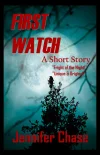With all of the technology and scientific breakthroughs implemented today, forensic science works industriously with new ways to help identify pieces of crime scene evidence, victims and suspects in order to solve cases.
I’ve highlighted three different scientific practices that could impact how crime scenes are processed and how perpetrators are identified. These techniques have been individually posted previously on my blog, but I thought it was worth reposting because of the significant importance.
BIOMETRIC DATA
Biometric data is the digital or analog representation of the physical attributes used to uniquely identify all types of characteristics in humans (ultimately identifying a specific human), which includes many types of forensic evidence.
In November of 2011, The National Institute of Standards and Technology (NIST) published a revised biometric standard that improves the type and amount of information that forensic scientists can share across international networks. This would further assist in the identification of a victim(s) and/or solve crime(s).
Brad Wing, a NIST Biometrics Standard Coordinator, stated, “The additions to this version of the standard represent a great leap forward. The capabilities of the system have been greatly expanded from that of matching a fingerprint, facial image or iris sample collected directly from a live person and comparing to the samples previously stored in a database.”
Here are some areas that this new standard improves:
- Exchange of DNA data. For example, DNA can be used in a criminal case for identification in a rape case, identifying victims in disasters or plan crashes, and any investigation that needs to compare a sample from a suspect to a particular case.
- Improved markers for latent prints: fingerprints, palm prints, and footprints.
- Share geo-positioning coordinates of biometric sample collection. For example, photos of items found around a crime scene as well as audio and video clips.
All of these examples can be shared with scientists and law enforcement agencies across the globe.
VISUALIZING FINGERPRINTS FROM FABRICS
A ground-breaking technique has emerged on recovering fingerprints off of fabrics from Scottish Police and forensics experts from the University of Abertay Dundee. This new technique has focused on revealing fingerprint ridge detail and comparisons from various fabrics – such as cotton, silk, nylon, and polyester.
This could mean new, verifiable clues with criminal investigations. It could tell investigators if a victim was pushed or grabbed from a particular area of their clothing. Fabric will become a silent witness to an investigation.
The technique used is called vacuum metal deposition (VMD) and it uses gold and zinc to recover a fingerprint mark. VMD is a highly sensitive technique that is already used in identifying and recovering fingerprints from smooth surfaces as plastic and glass as early as the 1970s.
According to forensic scientists and researchers, the fabric is placed in the vacuum chamber, gold is heated, and then the fine film is spread over the fabric. The next step is to heat up the zinc, which attaches to the gold where there is no fingerprint residue. This process will reveal where a fingerprint contact has been made on the fabric.
This new forensic process used to establish fingerprints and impression evidence from various fabrics will not necessarily convict a criminal, but used alongside other evidence will present a stronger case.
UNDETECTABLE BLOODSTAINS
A picture is said to be worth a thousand words. What about a camera that can actually have the ability to see the invisible, and more? Chemists from the University of South Carolina are developing a camera that will reveal what the naked eye can’t see.
This new technique is called multimode imaging in the thermal infrared. This technology uses photographic images in several different ways. It captures hundreds of invisible images in just a few seconds, while illuminating the subjects with pulses of invisible infrared light waves. In addition, some of these images are taken with special filters that can block out certain wavelengths making it possible to block out certain objects in the background. It can actually detect blood that has been diluted to as little as one part blood to 100 parts water. That’s quite impressive.
Michael Mynick, Stephen Morgan and their graduate student colleagues explain that the luminol (chemical used for detecting blood stains and other substances at a crime scene) test has disadvantages for being potentially toxic, can’t detect certain diluted substances, and provide false positives.
One of the most impressive aspects of this type of photo imaging is that it can detect the difference between blood, household bleach, soda, coffee, and invisible fabric watermarks.
It’s very encouraging to read about new and less toxic techniques to help investigators and forensic scientists identify a suspect from the crime scene.
* * *




































Great post of forensics. I write about murder and medicine and this information will help me “manage” a crime scene in my books much better. Thanks for sharing!
LikeLike
Thanks for stopping by James! There really are some interesting forensic breakthroughs going on out there. I will continue to post as I find them 🙂
LikeLike
I swear, if I ever decide to murder someone in anything I write, I’m going to be revisiting your blog. I love all this science!
LikeLike
Pingback: Forensics and Criminology: How’d They Do That? | Author Jennifer Chase
Pingback: Gather Around and Discover the Impression Evidence at the Crime Scene | Author Jennifer Chase
Pingback: Forensics and Criminology: How Did They Do That? | Author Jennifer Chase